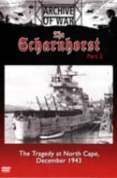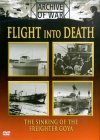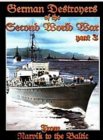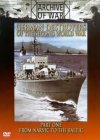![Pauline's Quirkes - The Complete Series [DVD]](/pictures/1114352.jpg) Pauline's Quirkes - The Complete Series | DVD | (04/06/2012)
from £N/A
| Saving you £N/A (N/A%)
| RRP
Pauline's Quirkes - The Complete Series | DVD | (04/06/2012)
from £N/A
| Saving you £N/A (N/A%)
| RRP Pauline's Quirkes, a light-hearted, provocative magazine-style show for teenagers, provided an early showcase for the talents of one of Britain's best-loved stars. After playing a leading role in Thames' You Must Be Joking!, the 16-year-old Pauline took centre-stage in this teatime spin-off series, presenting a lively mix of comedy sketches, music and features. Teen pop idols Flintlock provided the songs while unleashing outbreaks of hysteria among the studio audience, and Pauline's co-presenters included future Birds of a Feather co-star Linda Robson.Irreverent, often risqu humour (usually at the expense of the Flintlock boys) and discussion of the pressing issues of the day (should boys be allowed to wear skirts to school?) raised eyebrows and blazed a trail for a new kind of show aimed at teenage audiences. This set contains the complete series, also featuring DJs Mike Read and Steve Wright, and master magician Ali Bongo.
![Battles of the Eastern Front [2007]](/pictures/1070714.jpg) Battles of the Eastern Front | DVD | (02/04/2007)
from £N/A
| Saving you £N/A (N/A%)
| RRP
Battles of the Eastern Front | DVD | (02/04/2007)
from £N/A
| Saving you £N/A (N/A%)
| RRP The collapse of the German Eastern Front started from the beginning of 1944. The continually increasing importance of supplies to the opposing sides could no longer be lastingly sustained by the German forces. Grave strategic mistakes contributed more than their fair share, and allowed the Red Army to push forward as far as the East Prussian border at the end of 1944.
 Battle Of The Atlantic - From Success To Failure 1939/45 | DVD | (26/01/2004)
from £N/A
| Saving you £N/A (N/A%)
| RRP
Battle Of The Atlantic - From Success To Failure 1939/45 | DVD | (26/01/2004)
from £N/A
| Saving you £N/A (N/A%)
| RRP For six years the Atlantic Ocean was the scene of critical conflict and this is the story of that conflict.
 The Scharnhorst - Part 2 | DVD | (24/05/2004)
from £N/A
| Saving you £N/A (N/A%)
| RRP
The Scharnhorst - Part 2 | DVD | (24/05/2004)
from £N/A
| Saving you £N/A (N/A%)
| RRP On the 26th December 1943 only thirty-six of the crew of one thousand nine hundred and sixty-eight were saved after this ship was sunk by the British Navy. This is the story of that tragedy.
 Christmas In Wartime - The German People In Wartime 1939- 1945 | DVD | (20/10/2003)
from £N/A
| Saving you £N/A (N/A%)
| RRP
Christmas In Wartime - The German People In Wartime 1939- 1945 | DVD | (20/10/2003)
from £N/A
| Saving you £N/A (N/A%)
| RRP The story of the German population at Christmas during Wartime featuring original newsreels.
![The Home Front - The German People In War Time 1939-1945 [2000]](/pictures/1042034.jpg) The Home Front - The German People In War Time 1939-1945 | DVD | (20/10/2003)
from £N/A
| Saving you £N/A (N/A%)
| RRP
The Home Front - The German People In War Time 1939-1945 | DVD | (20/10/2003)
from £N/A
| Saving you £N/A (N/A%)
| RRP A documentary featuring original footage of German life during World War II.
 The Eastern Front | DVD | (21/06/2004)
from £N/A
| Saving you £N/A (N/A%)
| RRP
The Eastern Front | DVD | (21/06/2004)
from £N/A
| Saving you £N/A (N/A%)
| RRP A fascinating documentary using original footage featuring the collapse of German resistance along the Eastern Front from 1944.
 Attack on Fort Eben-Emael - Assault from the Air 10 May 1940 | DVD | (24/05/2004)
from £N/A
| Saving you £N/A (N/A%)
| RRP
Attack on Fort Eben-Emael - Assault from the Air 10 May 1940 | DVD | (24/05/2004)
from £N/A
| Saving you £N/A (N/A%)
| RRP Ten minutes before the beginning of the western campaign on the 10th of May 1940 a hand picked division of para-troopers was already in the air waiting to carry out a special task of strategic importance: a lightining attack to take the important bridges over the Albert canal to the west of Maastricht and to put the heavy artillery of Fort Eben Emael out of action...
 Flight Into Death - The Sinking Of The Freighter Goya | DVD | (24/05/2004)
from £N/A
| Saving you £N/A (N/A%)
| RRP
Flight Into Death - The Sinking Of The Freighter Goya | DVD | (24/05/2004)
from £N/A
| Saving you £N/A (N/A%)
| RRP  The Imperial Navy - 1919 To 1935 | DVD | (21/02/2005)
from £N/A
| Saving you £N/A (N/A%)
| RRP
The Imperial Navy - 1919 To 1935 | DVD | (21/02/2005)
from £N/A
| Saving you £N/A (N/A%)
| RRP With the end of the First World War in 1918 and the scuttling of the German Fleet in Scapaflow in 1919 the Emperor's Fleet ceased to exist. Following the Treaty of Versailles an Imperial Fleet cam into being which was drastically limited in its potential Building on the technical achievements of the German marine engineers there followed some internationally acclaimed constructions with the building of the so-called 'pocket battleships' - the armour plated ships of the Deutsch
 German Destroyers Of The Second World War - Part 3 | DVD | (20/03/2004)
from £N/A
| Saving you £N/A (N/A%)
| RRP
German Destroyers Of The Second World War - Part 3 | DVD | (20/03/2004)
from £N/A
| Saving you £N/A (N/A%)
| RRP Part three in a three part series looking at the role of the German Destroyers during the Second World War featuring original newsreels.
 German Destroyers Of The Second World War - Part 1 | DVD | (26/01/2004)
from £9.94
| Saving you £6.04 (86.91%)
| RRP
German Destroyers Of The Second World War - Part 1 | DVD | (26/01/2004)
from £9.94
| Saving you £6.04 (86.91%)
| RRP Armed destroyers were built for the German navy from the mid-thirties. These all purpose battle-ships developed from the torpedo boats of WWI were developed with great versatility during the war. Their area of responsibility ranged from escort duty for mine operations and for heavy naval warships through submarine chases torpedo attacks and mine operations to the extensive task of keeping the coastline safe. And they were occasionally also deployed as fast troop carriers.
![Battles On The Western Front 1942-1945 [1993]](/pictures/1042031.jpg) Battles On The Western Front 1942-1945 | DVD | (20/10/2003)
from £5.49
| Saving you £7.50 (57.70%)
| RRP
Battles On The Western Front 1942-1945 | DVD | (20/10/2003)
from £5.49
| Saving you £7.50 (57.70%)
| RRP The complete story of the events after England and France had declared war on the German Empire.
 Deprivation And Sacrifice - The German People In War Time 1939-1945 | DVD | (20/10/2003)
from £N/A
| Saving you £N/A (N/A%)
| RRP
Deprivation And Sacrifice - The German People In War Time 1939-1945 | DVD | (20/10/2003)
from £N/A
| Saving you £N/A (N/A%)
| RRP The German civilian population had to suffer countless deprivations and personal sacrifices during the Second World War. With the continuance of the World War the situation became evermore difficult and encroached to an increasing extent upon the personal interests of the people. The sacrifice of the German civilian population is an historic fact which claimed almost ten million human lives. That too should never be forgotten.
 German Destroyers Of The Second World War - Part 2: | DVD | (01/03/2004)
from £N/A
| Saving you £N/A (N/A%)
| RRP
German Destroyers Of The Second World War - Part 2: | DVD | (01/03/2004)
from £N/A
| Saving you £N/A (N/A%)
| RRP From Narvik to the Baltic the build-up of weapons of destruction for the German war navy proceeded from the mid-1930s. THese general purpose battleships developed from the torpedo boats of World War I saw many uses during the following conflict.
 Hitler's Birthdays 1933 - 1945 | DVD | (17/04/2004)
from £N/A
| Saving you £N/A (N/A%)
| RRP
Hitler's Birthdays 1933 - 1945 | DVD | (17/04/2004)
from £N/A
| Saving you £N/A (N/A%)
| RRP The history of the 'Fuhrer's Birthdays' from 1933 to 1945 and the effects of them on the German people.

Please wait. Loading...
This site uses cookies.
More details in our privacy policy